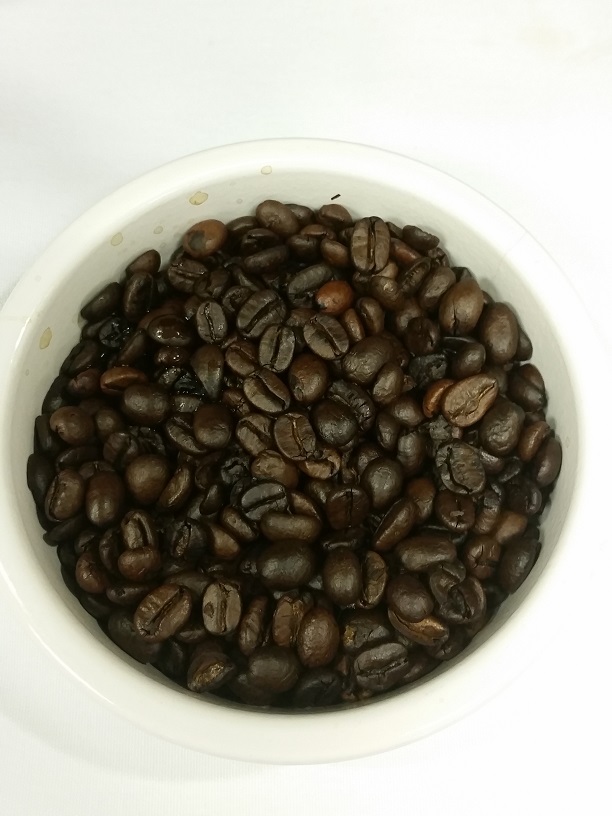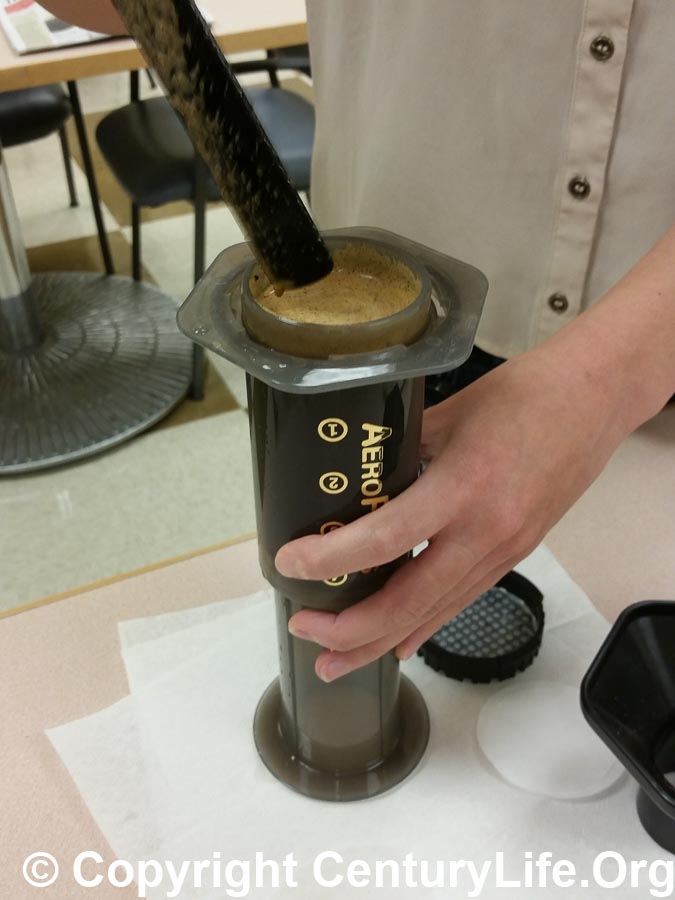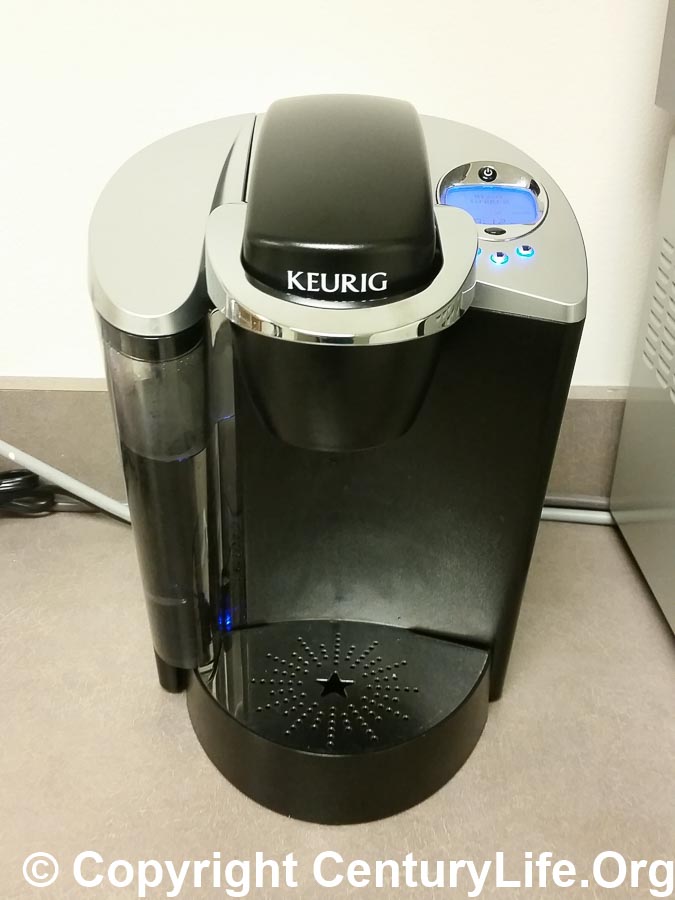
I worked as a professional coffee scientist for several years and sometimes people ask me for coffee advice. I’ll briefly share some tips here. We’ll go over the process of coffee-making, from start to finish. There are four main parts: bean quality, storage, preparation, and brewing. For the best cup of coffee, you want the freshest coffee beans, ground right before you brew them, using the best water temperature.
Bean Quality:
First, the quality of your beans affects the flavor of the cup. Unfortunately you can’t tell what quality of beans you are getting unless you buy green beans and roast them yourself. If you are buying pre-roasted beans you have to trust that you are getting what you paid for.
What do I mean by quality? Coffee is a commodity and traded based on the quality of the green beans.1 Each lot of coffee starts with a perfect score and points are removed for visual defects (e.g., insect damage, broken beans) and flavor defects like sour, moldy, or rancid beans. No one would sell a cup made from bad tasting beans, but some companies blend the bad tasting beans in with good tasting beans so that no one will notice. Even if they coffee does not taste bad, it does not taste as good as it would otherwise. In general, you are going to get average coffee since most coffee available on the market (85% to 90%) is of average quality. If you like your regular coffee you can save some money by staying at mainstream quality. If you find your coffee lacking try drinking a more premium quality bean, whether you buy and roast it yourself or you buy it from a company you trust.
Bean Storage:
For the best quality coffee, you need to have fresh beans. Once you roast your coffee the oils will start to go rancid. What does this mean? The wonderful roasted coffee aroma breaks down and goes away leaving you with a stale bland cup2 he only way to get around this problem is to buy and consume your coffee as quickly as possible. Buying the highest quality beans and letting them go stale is a waste of money and could be worse than buying lower-quality beans that you consume quickly. Only buy as much coffee as you can drink in about two weeks.
What causes your coffee to go stale?
- Oxygen. Oxygen in air causes the oils in coffee to rancid. Most sellers seal their coffee under Nitrogen and add a one way valve to keep the package from blowing up like a balloon. This allows them to pack the coffee immediately after roasting, while it’s still off-gassing, minimizing the amount of oxygen in the package. Unfortunately, this isn’t a perfect solution. The valve lets out the aroma and there is always some residual oxygen that will slowly make your coffee go stale.
- Light. There is a reason no one sells coffee in clear containers, other than the bulk bins at supermarkets. Not only is the coffee open to the air, but it is exposed to light. Light breaks down oils in coffee making them go rancid. On top of that some stores don’t clean the bins so you have old oil that gets rubbed onto the fresh coffee. Stay away from buying coffee in bulk bins, since you have no idea how long it’s been sitting there, UNLESS you know for a fact that the coffee is freshly roasted.
- Moisture. The more moisture in your coffee the faster the coffee will go stale. Plus, water is used as a cheap filler. Who wants to pay top dollar for water instead of coffee? While you can’t check the moisture content of your coffee without lab equipment, in general, cheaper coffee contains more water. Also, the longer your coffee sits around in your cupboard (or the fridge), the more moisture it will pick up from the air. Store your coffee in a dark, dry environment, ideally with no oxygen.
Coffee Preparation:
- Cleanliness. Regularly clean your brewer and other equipment. Coffee residue on your brewing equipment will get stale the same way old coffee will and this will affect the flavor of your brew. If you are not cleaning your brewer regularly, you will be contaminate your new brews with old coffee.
- Grind Size. The larger the surface area to volume the faster your coffee will go stale. Another way to put this is once you grind coffee you speed up how fast it will go stale. The best thing to do is to buy whole beans and grind them immediately before brewing for the freshest cup. If you don’t think it matters try an experiment where you grind coffee, let it sit a week, a day, an hour, or a few minutes, and grind some fresh beans. Brew all of them and compare the flavor. If you are not sure what size you should grind to it varies based on the brew method.3 For best results use a high quality burr grinder, but any burr grinder is better than a blade grinder. A blade grinder cuts the coffee, heats it up more, and gives an uneven grind.4
- Water. If your water doesn’t taste good enough to drink straight from the tap, don’t brew coffee with it. Whether you use hard, soft, or distilled water affects the flavor because of the minerals, salts, or the lack thereof. Filtered, cold water is considered the best for coffee flavor.5 If you are not sure what tastes best experiment with your tap water vs. filtered to see which one you like best.
- Time & Temperature. One of the most important things about choosing your brew method is the water temperature, followed by the extraction time (how long the water touches the coffee). The best temperature is between 195 – 205 degrees Fahrenheit. If the water is too cold, the coffee will taste flat. If the water is too hot, it extracts bitter flavors that you don’t want. The ideal time depends on the equipment you are using–too short and you don’t get all the nice flavor and too long and you get the bitter flavors. Aim for a happy medium ~2-6 minutes.
- Coffee Quantity. The standard amount of coffee is one to two tablespoons per cup (177 ml or 6 oz). Once you find the amount you like, try using a scale for more consistency. Coffee is measured as 6 oz. per cup instead of 8 oz. for historical reasons, back when people used to drink smaller cups.
Final tip about brewing your coffee: drink it as soon as possible after brewing for the best flavor. Now, on to the brewers!
Brewing:
Each coffee brewer will give you a different flavor from the same beans. The best way to figure out what you like is to experiment. If you are lucky you have a friend who has one or more of the brewers below to experiment with. Otherwise, a few of them are reasonably priced.
Brewer Recommendations:
Best Flavor: For one to two people
- Pour-Over. Also known as a coffee cone, or the thing that looks like a basket from a drip machine. This is a very easy way to make a nice cup of coffee and they are affordable. The only accessories you need is a way to get some hot water and a filter. If you want to make coffee for just yourself , this is a simple, economic choice that is easy to clean. If you want to make coffee for two people at the same time you can buy a second pour over.
- This Melitta Coffee Maker is an example
, but if you don’t care about the travel mug the porcelain version is a good choice: Melitta Coffee Maker, Porcelain Cone Drip Brewer, (Pack of 4)
- Alternatively, you can go with the Clever Coffee Dripper (L)
, which holds the water. This lets you do a for a longer brew or split your brew in case your mug is too small to hold all of the coffee.
- An electric kettle
is a great way to heat your water quickly and easily.
- This Melitta Coffee Maker is an example
- French Press. The French Press submerges the grounds in water, unlike the pour-over style of coffee brewing. Since the grounds are in direct contact with the water you end up with coffee oil and a little bit of fine grounds in your cup. Personally I like the extra coffee flavor from the oil and feel that a French Press makes a nice cup of coffee. A French Press is also fairly easy to use, although there are a few parts that need to be regularly taken apart and put back together on the plunger. This is a good way to brew a few cups and have more control over your brew than an automatic drip machine.4
- Moka Pot. This is more popular in Europe. You brew your coffee on the stove using water in the bottom that is forced up into the grounds on the top. They are easy to use and give a strong brew like Espresso. Because the brew on the stove you don’t have a lot of control. If you like strong Espresso-like coffee and don’t want to pay for a home Espresso machine, this may be a good option.
- AeroPress. This is like a one-cup French press that uses a filter. The AeroPress is portable, gives a nice tasting cup of coffee, and is easy to clean. The AeroPress is another good option for one person. As an added bonus they are unique looking and may spark some conversation!

Best Flavor: For two or more people
- Chemex. A larger, cooler-looking version of the pour-over. It comes with it’s own filters instead of a standard coffee filter. Again, it makes a nice cup of coffee although you need to be careful with it since it’s glass. On the plus side, there is only one thing to clean! If you like the flavor of the pour-over and need to make a few cups this is a good choice.
- French Press. Depending on the size of French Press and how much you drink it will also work for brewing larger amounts.
- Vacuum Pot. Also called a siphon, this is one of the more entertaining ways to make coffee! I’ve only used one a few times because they are a bit hard to clean. Still, they make a nice cup of coffee. The coffee is in direct contact with the water, giving you a nicely flavored cup from the coffee oils. This may be a good choice if you like the flavor of the coffee oils and enjoy the theatrics. If you want a low maintenance brewer it’s not the best choice.
- Pour Over. If you want a larger version Melitta makes 6- and 10-cup pour overs
.
Convenience: For one to two people
- Single Serve (Cup-Style). Keurig
, Tassimo
, or similar. The single serve brewers top the charts on convenience and price per cup. Some of the machines are programmed to brew different pods differently and should give you a well-brewed cup tailored for the coffee you choose. Unfortunately. the pods have a high surface area which means that everything else being equal your coffee will go stale faster. A way to get around this problem is to use a refillable basket a refillable basket. Use these if you really value convenience, don’t mind about the high price per cup, and are making coffee for one or two people.

- Pour Over. See description above. It’s pretty easy to set up and make a cup, especially if you buy pre-ground coffee and use an electric kettle to heat the water.
Convenience: For two or more people
- Drip. These usually make the worst coffee because they can’t heat the water up enough and the water sits on the coffee for a long time giving you an over extracted bitter cup. However, these brewers make multiple cups and are easy to use. You add a filter, coffee, water and turn them on to get coffee about 10 minutes later. Use them if you value convenience or making a lot of coffee at once. Yes, you can get a small one for one person if you want, but a pour over and electric kettle is less work to clean and you can use the kettle to heat water for any reason.
CONCLUSION
After reading this article you will know how to make a better cup of coffee. Even if you can’t improve all four areas (beans, storage, preparation, and brewing), improving any part will help. Experiment to see what tastes best to you. Because there is no standard way to label or prepare coffee the only way to get a coffee you enjoy is to test a few different things. Have fun drinking coffee and figuring out what gives you your best cup!
FOOTNOTES